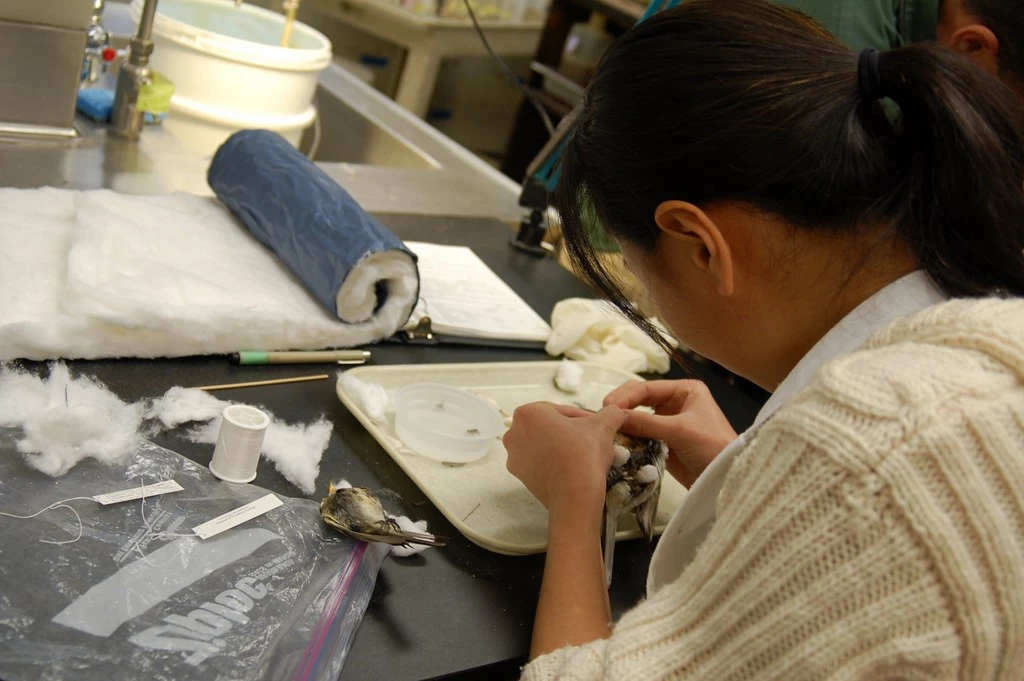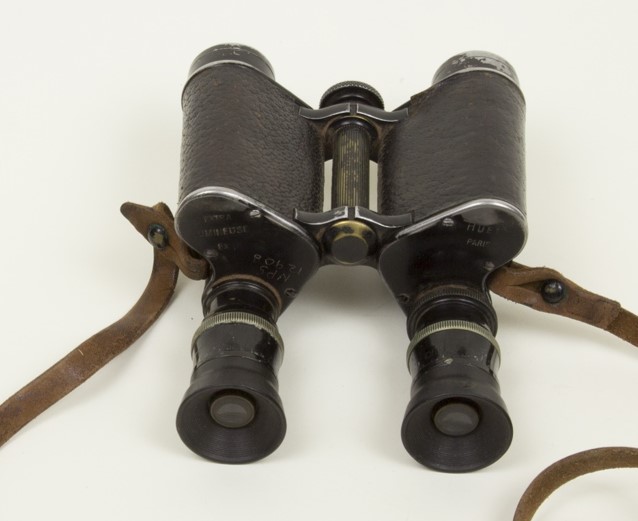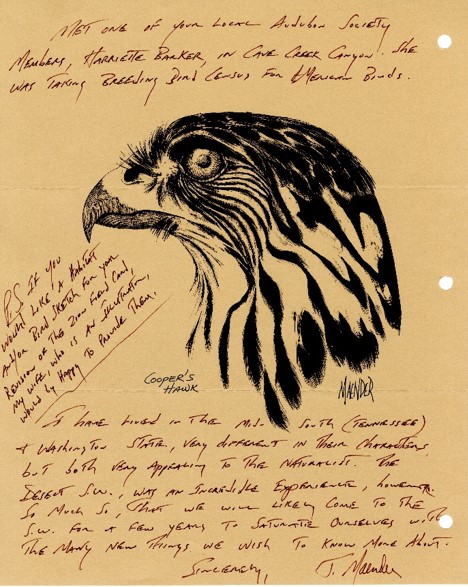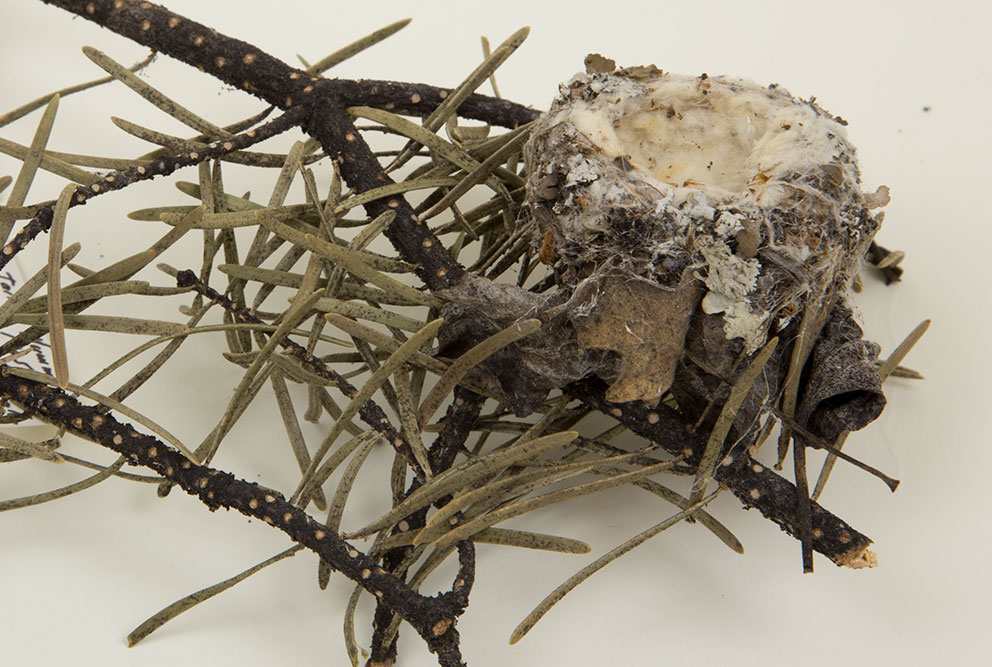Last updated: March 8, 2022
Article
Zion National Park Teaching with Museum Collections Lesson Unit Plan

A. Title: Beginner Birding: Using Bird Specimens to Understand our Ecosystems
- Developers: Andrea Buttram, Zion National Park; Anne K. Winters, Zion National Park Forever Project
- Grade Level: 5 – 8
- Number of Lesson Plans: 4
B. Overview
-
Park Name: Zion National Park
-
Description: Four lesson plans cover how museum collections facilitate understanding of natural history, the environment, and bird adaptations to different ecosystems
-
Essential Question: How does the study of birds in nature and in museum collections help us understand our changing environment?
C. Museum Collections, Supplies and Local Items, and Resources
D. National Educational Standards
E. Student Learning Objectives
- Understand how different adaptations in birds relate to different ecosystems
- Study and analyze biological specimens.
- Read and designate reliable scientific information from internet and text sources about birds and use the source for research.
- Share scientific information with the general public in an understandable and impactful manner.
F. Background and Historical Context
G. Activities
- Virtually visit a natural history museum to understand collection exhibits and their role in modern society.
- Make a birdfeeder to encourage bird visitation to their home.
- Observe, collect, and share field data of birds living in their community and Zion National Park.
- Use field studies, biological specimen analysis, and scientific information sources to create a virtual exhibit and learning experience for a general audience.
- Create an artistic rendition of a hummingbird nest based on information from a virtual exhibit
H. Lessons
Lesson 1: Exploring Natural History Collections
Overview
This lesson introduces students to natural history collections, how they are shared, and the professionals working behind the scenes as part of the ZION birding unit. It can also be used as a standalone learning activity. For resources, see the Section C “NPS and Other Resources” column.
Activity 1 Virtual Museum Scavenger Hunt
Students will virtually visit the Smithsonian Institution National Museum of Natural History in small team groups or as individuals to complete a scavenger hunt.
- Begin with a class discussion about museums and student museum visitation experiences. Discuss different types of museums (natural history, art, history).
- Students will visit the virtual exhibit and complete the student scavenger task sheet [See “Natural History Museum Scavenger Hunt”].
- After completing the scavenger hunt, students will share impressions of the museum through conversations or short written responses. The teacher may ask specific questions or leave the summarization to individuals.
Activity 2 Natural History Collections Backstage Pass
Students will get a behind the scenes look at Zion National Park’s natural history collections and provides a differentiation between public museum exhibits and organizational collections. The online photo slides give a brief overview of sample collection, preservation, storage, and purpose.
Questions about museums: What is natural history? What do you think the mission of a museum is? Who is the target audience? Should museums charge for admission? Do you think museums are a worthwhile investment of people, time, and money? How do you feel about virtual museums versus visiting in person? What are some differences you identify between art, history, and natural history museums? What are some similarities?
Questions about collections: Who uses collection items and specimens not on display in museums? How might animal skins, fossils, plant specimens preserved now help our society in the future? How should collections be made accessible to the general public? Is the collection, preservation, and storage of specimens and objects a worthwhile investment of people, time, and money? Do you think art and history collections are the same or different?
Extension Activity
Have students create a video to express their thoughts and opinions about what role natural history museums and collection resources play in education, research, and our society. Flipgrid is one popular and easy to use tool for students to express and share thoughts with others via video. Videos can be shared among classmates or only with the teacher. (Technology, Language Arts)
Lesson 2: Research Methods Using Field Study and Museum & Archival Collections
Overview
Lesson 2 is focused on the use of field studies and museum and archival collections as a source of scientific information. Students are introduced to bird watching as a hobby, as a means of collecting data, and the process of identifying birds from such activities. Students will practice observation and data collection skills in class via bird video footage and daily home observations. Students will also read and analyze a ZION National Park PowerPoint: “Field Notes, Observations, and Archives” to the class.
For resources, see the Section C “NPS and Other Resources” column.
Activity 1: Field Study
Students will use the “Lesson 2 Bird Field Observation Data Sheet” to record their observations of bird behaviors and physical traits in the observation videos listed in the Section C “NPS and Other Resources” column.
Students will then use the same data sheet to conduct bird field observations of birds for the next week (or however long the teacher decides) at home in an outdoor space.
Students should observe the birds using binoculars (see similar object in ZION collection) and record the various species observed (see Cooper’s Hawk document in ZION collection).
A detailed sketch of the bird is not needed- the basic silhouette or outline is most helpful to birders. After the first day encourage students to notice more details and begin to use an app or field guide to narrow down or identify species.
Activity 2: Grant Proposal
Students watch a five-minute video outlining the day in the life of a young field researcher in Kenya. Afterwards students create a proposal and budget for a fictional research project they would be interested in leading in any location they choose. Details are found in Lesson 2’s slide presentation. (Mathematics)
See “Lesson 2 Student Research Proposal Template”
Extension Activity: Bird Feeder
Students will construct bird feeders to hang at their home outdoor space they will use to attract birds for observation.
Students use common household and reusable items to create a feeder. String, soda bottles, plastic dinner plates, scissors, etc. can be easily and cheaply contributed by students, community, and teachers.
The bird feeder project can be conducted in any way that best suits the desired learning outcome and complexity.
-
Students research established DIY feeder plans online and build.
-
Students sketch, design, and construct original feeders without outside influence.
Lesson 3: Study and Analysis of Biological Specimens
Overview
This lesson introduces students to specimens, how to read a specimen, and hypothesizing what ecosystem a species is best adapted to based upon investigation.
Activity 1: Bird Feather Fluorescence Video
Students watch a video featuring a Zion museum technician and wildlife biologist who explain how technology is used to reveal information from museum specimens.
Activity 2: Bird Specimen AnalysisS
Students will analyze a bird specimen from Zion’s virtual museum exhibit using the “How to Read a Bird Specimen” worksheet.
Extension Activity: Creating and Documenting a Bird Nest
Students will view a nest in the Zion collection (ZION 1644) and then create an artistically inspired version of their choosing. They will also create a specimen tag for their creation. (Art, Technology)
For resources, see the Section C “NPS and Other Resources” column.
Lesson 4: Creating a Virtual Exhibit
Overview
Students will collaborate and design a virtual exhibit for a bird observed in their home region. The general audience exhibit may be presented as a slideshow or a virtual exhibit such as the NPS National Capital Area Natural History virtual exhibit or as a 3D virtual space created with a free software application such as that found at www.artsteps.com.
Students will synthesize knowledge acquired from the previous three lessons, including scientific information from cited sources, images, maps, field notes, specimen tags, drawings, and other documents.
See “Lesson 4: Creating a Virtual Bird Exhibit” PowerPoint for project details, teacher guidance, and multimedia links.
Extension Activity
Host an event where student exhibits are shared with other classes, school, community and family online or in-person.
I. Evaluation/Assessment for Measurable Results
Evaluate the Lesson 2 Grant Proposal and the Lesson 4 exhibit.
J. Teacher Tips
An integral element of this lesson is the student bird field study. Setting aside time each day to allow students to share findings and collectively identify species is key to sparking interest and connection to natural science. Birding is an activity that can be enjoyed throughout one’s lifetime and is accessible regardless of location, economic standing, physical limitations, etc.




